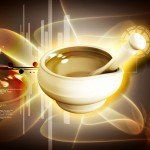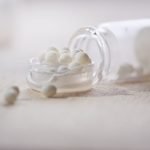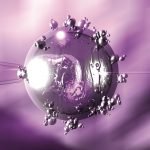Primary Raynaud Phenomenon
Case Study of a 42-year-old
Ironwoman with Daily Raynaud Disease
Steven Sandberg-Lewis, ND, DHANP
Raynaud disease (primary Raynaud phenomenon), named after medical student Maurice Raynaud in 1862, manifests as recurrent vasospasm of the fingers and toes. Raynaud defined it as “episodic, symmetric, acral vasospasm characterized by pallor, cyanosis, suffusion, and a sense of fullness or tautness, which may be painful.”1 Diagnostic factors include symmetric bilateral involvement, no detectable underlying cause, and lack of lab markers for inflammation and antinuclear antibodies.
Our patient worked as a personal trainer. She played hard, is a three time Ironman competitor and general outdoors person. Her Raynaud symptoms began in 2000 following reconstructive surgery for a comminuted fracture of her right wrist. Blanching and pain began on the 3rd right distal phalanx and over an 8 year period spread to involve all the fingers and toes. Episodes occurred several times daily with 5-6/10 tingling pain on waking and more episodes triggered by getting warm or perspiring during exercise. The fingers and toes would turn grey-white from the PIP joints distally.
Physical exam: On her toes were small erythematous papules which had been cauterized repeatedly –“or they won’t heal” which recur every 4 months. We determined that these were chilblains, a skin lesion related to chronic cold exposure.
T -98.1, BP -128/90. R-16, P-60. Capillary refill was 3 seconds on the upper and lower extremities. Digital temperatures were in the low 80s for both hands (ideal is mid 90’s.)
Labs: Previous testing revealed a negative dsDNA and weakly positive ANA at 1:40, which is not considered significant. ESR, CRP and RF were also negative. Vitamin D was 46. A chemistry panel from 2 years prior tested borderline low on serum sodium (137 mmol/L) and potassium (3.6 mmol/L) There was no anemia. Anti-thyroglobulin Aby and thyroid peroxidase abys negative were negative. The thyroid panel revealed a low free T3 of 2.10 (N=2.10-5.34), a normal free T4 of 1.21 (0.8-2.01) and a TSH of 1.13 (0.5-4.7.)
Assessment: This is an atypical case because her episodes are triggered by exercise and becoming warm. The thyroid pattern is one of underconversion with a low T3. A Hungarian case study described a man whose Raynaud phenomenon was cured by treating his hypothyroidism with L-thyroxine.2 Interestingly, H.pylori overgrowth may be associated with both autoimmune thyroiditis and Raynaud.3 The low sodium and potassium levels made us consider a relationship between sweating and electrolyte losses as an aggravating factor for her vasospasms. I could not find research linking low sodium or potassium levels to RD, but there is evidence that serum magnesium levels decrease after cold exposure in RD patients and not in controls.4
Treatment: Neurofeedback and breath training were used in order to balance the autonomic nervous system. 12.5 mg iodline (from potassium iodide) and 200 mcg of selenium (from selenomethionine) were given once daily to aid in the peripheral conversion of T4 toT3. Concentrated trace mineral drop complex – 20 gtts BID were used to replace electrolytes lost during her extensive workouts.
Response: Within a few days, our patient had no episodes at all of Raynaud disease. None on waking and none during the day or night. This was in March of this year. After a month of freedom from extremity constriction and pain we finished the treatment sessions and she has continued the supplemental nutrients. We will retest her T3 soon.
I find this case to be useful because the simple treatment was rapid and effective and the case was atypical because of the unusual trigger pattern.
Dr. Sandberg-Lewis, ND, DHANP, has been a practicing naturopathic physician since his graduation from National University of Natural Medicine (NUNM) in 1978. He has been a professor at NUNM since 1985, teaching a variety of courses but primarily focusing on gastroenterology and GI physical medicine. His clinic rotations are particularly popular among NUNM doctoral students. In addition to supervising clinical rotations he also maintains a part-time practice at 8Hearts Health and Wellness in Portland, Oregon.
He is a popular international lecturer at functional medicine seminars, presents webinars, writes articles for NDNR and the Townsend Letter and is frequently interviewed on issues of digestive health and disease. He is the author of the medical textbook Functional Gastroenterology: Assessing and Addressing the Causes of Functional Digestive Disorders, Second Edition, 2017, which is available at amazon.com. In 2010 he co-founded the SIBO Center at NUNM which is one of only four centers in the USA for Small Intestine Bacterial Overgrowth diagnosis, treatment, education and research. In 2014 he was named one of the “Top Docs” in Portland monthly magazine’s yearly healthcare issue and in 2015 was inducted into the OANP/NUNM Hall of Fame.
Within gastroenterology, he has special interest and expertise in inflammatory bowel disease (including microscopic colitis), irritable bowel syndrome (including post-infectious IBS), Small Intestine Bacterial Overgrowth (SIBO), hiatal hernia, gastroesophageal and bile reflux (GERD), biliary dyskinesia, and chronic states of nausea and vomiting.
Many of the patients referred to Dr. Sandberg-Lewis have digestive conditions that have defied diagnosis and effective resolution. Often these patients desire naturopathic treatment options in lieu of the courses of treatments they have previously undergone. He understands diseases of the gastrointestinal tract, but also can assess function and often find successful treatments to regain a balance in the digestive system.
Dr. Sandberg-Lewis lives in Portland with his wife, Kayle. His interests include mandolin, guitar and voice; cross country skiing; writing and lecturing.
References
1 www.emedicine.com
2. Lateiwish AM et al, Remission of Raynaud’s phenomenon after L-thyroxine therapy in a patient with hypothyroidism. J Endocrinol Invest. 1992 Jan;15(1):49-51.
3. Prelipcean CC et al, Extragastric manifestations of Helicobacter pylori infection. Rev Med Chir Soc Med Nat Iasi. 2007 Jul-Sep;111(3):575-83.
4. Leppert J et al, Lower serum magnesium level after exposure to cold in women with primary Raynaud’s phenomenon. J Intern Med. 1990 Sep;228(3):235-9.









